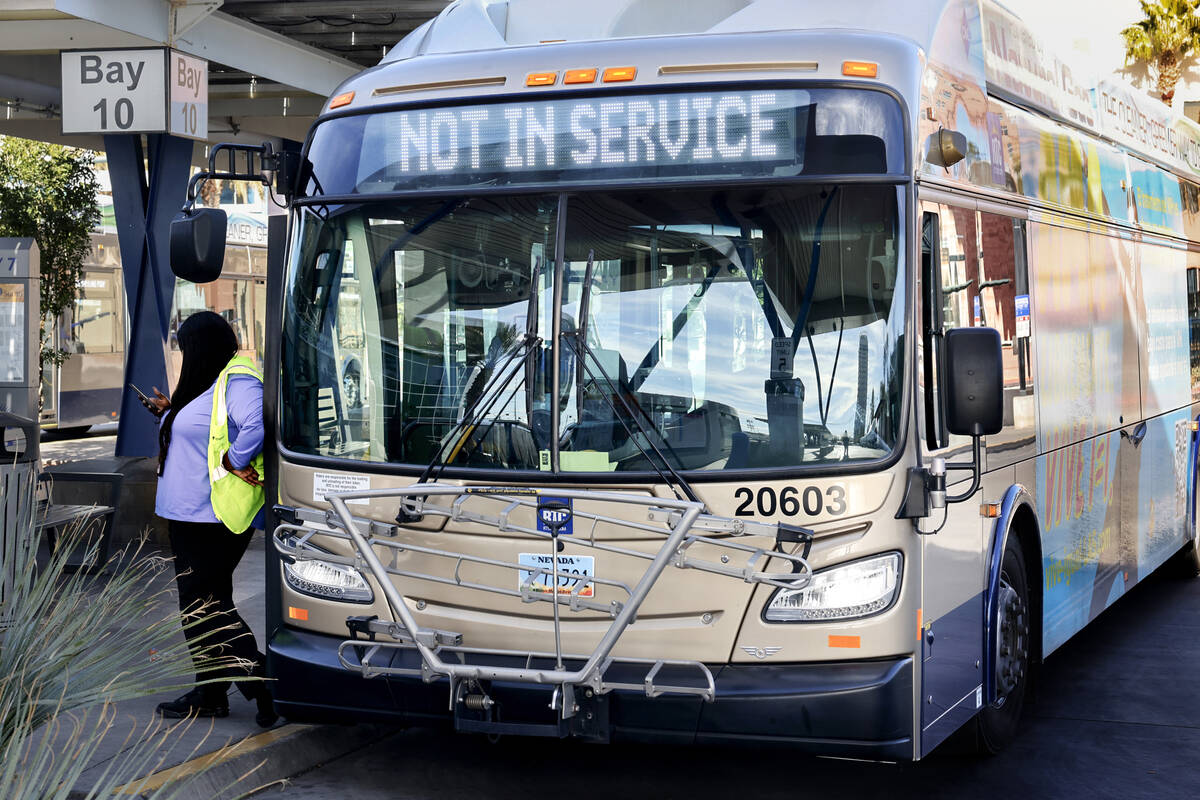‘They’ll be all over the city’: RTC bolsters security team in Las Vegas

Transportation officials plan to bolster the number of armed security guards to patrol buses and facilities across the Las Vegas Valley.
The Regional Transportation Commission of Southern Nevada on Monday increased the number of security officers to 300 across its transit system, which features 39 routes in Clark County. The number marks an increase of about 50 officers — and all of the guards will be armed.
The changes come as RTC switches security providers, from Marksmen to Inter-Con after a bidding process. Previously 60 to 70 percent of officers patrolling buses and facilities in the Las Vegas Valley were armed, but Tom Atteberry, RTC director of safety and security, said the transit agency wanted to further that number with the change of security provider.
“With Inter-Con, everybody on the street that will be working in the field on the bus routes and transit facilities will be fully armed,” Atteberry said in a phone interview. “We’re really excited about that.”
Guards will be tasked with patrolling the 51 million people who annually ride the 39 bus routes, with nearly 500 buses and almost 1,400 bus drivers.
“The increase from 250 to 300 is really going to help us out tremendously,” Atteberry said. A new rule for security guards patrolling the bus system will require them to stand and to wear new uniforms with both moves designed to increase their visibility.
“Full presence, command presence on the buses,” he said. “So that the riders and the drivers can see them. They’ll have new uniforms, a lot higher visible uniforms, lime green with black.”
The patrol team also will be using new RTC-purchased vehicles, which the RTC plans to swap out about every four years or 100,000 miles.
The RTC has shrunk the zones that armed guards will patrol at a given time, to make it easier for them to cover their quadrants and also increase response times. Officers will be located on buses, at transit facilities, in patrol cars and even at some bus stops, looking to increase safety every step of the way for riders and RTC employees alike.
“They’ll be all over the city,” Atteberry said.
The increase in officers and arming 100 percent of the security force isn’t because of an influx in violent incidents, Atteberry said. Violent incidents on buses and at transit facilities in the valley are down, going from 35 passenger-on-driver assaults and 166 passenger-on-passenger assaults during fiscal year 2023 to 23 and 87, respectively, in fiscal year 2024, according to Atteberry.
“That’s a huge drop, especially with passenger on passenger, a 40 percent drop from last year,” he said.
Officers will aim to give passengers peace of mind, while also increasing fare policy and rule enforcement as well as offering assistance to passengers when needed.
Safety a focus
The addition of armed security guards comes on the heels of the RTC adopting other security enhancements to the system. Those include incorporating artificial intelligence in its transit facility security camera system, to detect potential gun threats.
The agency also recently added the use of nano devices in the event a bus driver is in danger of a physical assault or experiencing a medical episode. The devices are smaller than a cellphone, tracked via GPS, and were added to all buses, where drivers can unplug it from the vehicle to take with them when they take a break. If a driver encounters an emergency situation, the driver can press a button that will share the GPS location with dispatch for an immediate response.
“We’re layering security,” Atteberry said. “I’ve been here nine months in this position, and the deputy CEOs and CEO have allowed me to give my ideas and vision on where I think security should be with the transit system.”
Contact Mick Akers at makers@reviewjournal.com or 702-387-2920. Follow @mickakers on X. Send questions and comments to roadwarrior@reviewjournal.com.